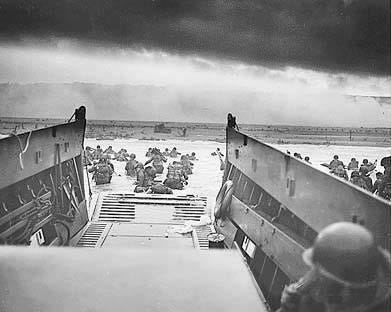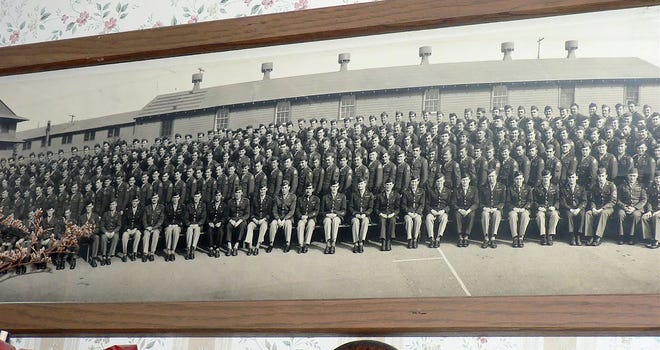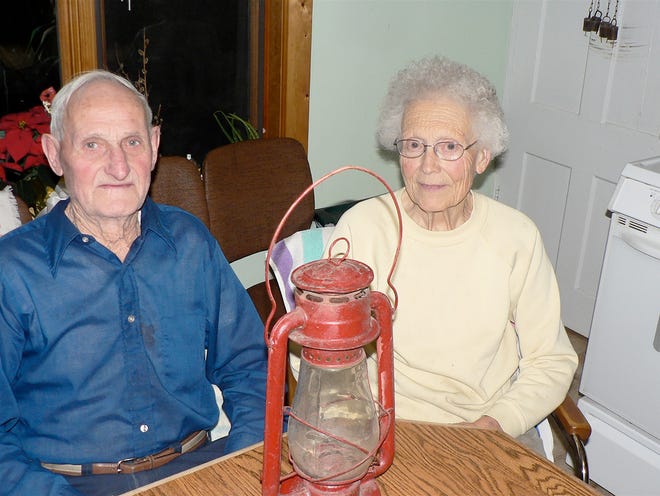The humble dairyman and WWII war hero

Memorial Day is a time to reflect on those who braved unimaginable horrors of war to preserve our freedoms not only in our country, but for the homelands of our Allies. One such unsung hero was a farm boy for south central Wisconsin, Les Mabie.
It was June 6, 1944 — 78 years ago — that Allied forces stormed the beaches in Normandy in the action called D-Day that historians see as changing the tide of World War II that ultimately brought Germany to surrender.
The Normandy landings, code named Operation Neptune, were the largest seaborne invasion in history as some 24,000 British, U.S., and Canadian troops landed on a 50-mile stretch of the Normandy coast that was divided into five sectors: Utah, Omaha, Gold, Juno, and Sword Beach.
To most people today, D-Day, Omaha Beach and even World War II are ancient history, but they are some one of the reasons America is what it is today. I would be one of those if not for an unexpected meeting with a dairy farmer who told me the story from a participants inside view — the result was a column written about Les Mabie, one of the most interesting people I ever met — that appeared on these pages in May of 2012. In celebration of 75 years since that historic, June 6, 1944, world-changing event, I again offer parts of that interview with Les Mabie.

Retold
The dairy farm on the western edge of the City of Stoughton in Dane county, Wisconsin, was always a picturesque scene because of the big pond downhill between the farmstead and the highway. It was known as "the Mabie farm" and there were always Jersey cattle in the pasture around the pond.
Last dairy
The Mabie farm was the last of some 20 dairies to quit milking (in 1992) on the nine miles of Highway 138 (better known as highway 106 for many years) between Oregon and Stoughton.
Les and Jeannette (Jean) Mabie still lived on the farm in 2012, although long retired when I interviewed them. In the course of our conversation, Mabie said he bought the farm in 1957 after serving in the army and working at a factory.

68 years before
I asked Les what he did in the Army.
"Well," Les said, "68 years ago on June 6, 1944, I was wading in chest high water heading toward Omaha Beach in Normandy watching my buddies die next to me and not knowing if I would be next."
We talked a bit more about his experiences and I couldn't believe what I was hearing. As time was short I scheduled another visit to hear the full story.
Les Mabie, who was born in 1921, was the fourth of 17 children who lived on several farms in Rock County and graduated from Edgerton High School.
Like most young men of the era, Les wanted to join the war effort and enlisted rather than be drafted.
"If I enlisted, the Army said I could go to school for special training," Les said. "Over the next six months, I attended vocational schools at Janesville, Milwaukee and Chicago for communications training while getting paid $21 a month."

Off to war
Les shipped off to England in April (or May) 1943 and began serious training for a potential landing in France with his unit, the 294th Joint Assault Signal Company (JASCO). Note: This was a very specialized organization of about 380 men, whose job was to set up radio and phone communications during the coming invasion. (There were none of today’s modern media at the time.)
On June 5, 1944, the GIs loaded on an LCI (landing craft infantry) for the invasion planned for the next day.
"That night was the longest and worst night I ever spent," Les said. "I was so worried and couldn't sleep — would I be able to shoot at another person when we got into battle?"
Before dawn, Mabie and his company loaded into small Higgins boats holding about 30 troops each.
"It was windy and the sea was rough," he remembers. "A good many soldiers fell off the nets when they were climbing down from the bigger ship and were crushed between the two boats or drowned."
Rough ride and slow walk
It was a rough ride toward Omaha Beach and there were bombs, artillery and small arms fire everywhere and “it was so noisy,” he remembers. Just before the front door/ramp was dropped, Mabie clambered over the side of the small boat — “we knew the bullets would fly in when the door opened,” and hit the water.
On the way down, Les ditched his personal stuff (not the audio equipment), which weighed about 120 pounds in case the water was deep. It turned out to be chest high and he and his fellow soldiers plodded towards shore at 6:16 a.m. on D-Day.
"It was bad," Les remembers, "I'd have a friend next to me and he'd be gone. Then another and another. It was terrible but our orders were to never stop to help anyone who was wounded," he says. "I did help one wounded buddy get ashore, but I never saw him again."

He made it
Mabie made it to the beach, and with the others remaining from his unit, began assembling the radio system that included wires, generators, radio, phones and the other equipment.
"Our job was to communicate with the air force and direct their air strikes," he says. (Note: This was the only communications system on the beach until noon of D-Day.)
Mabie was trying to do his assigned job while moving forward and being under attack from the Germans dug in on the hills overlooking the beach.
"We moved with the infantry. I had a carbine. It took two days for our group to get off the beach and over the hills. We crawled on our bellies to get to the concrete pillboxes," he said. "Then we threw grenades into the gun slits. The grenades explode 6 - 7 seconds after the pin is pulled but our orders were to hold it for two seconds so the Germans wouldn't throw them back. That was hard to do."
Biggest invasion
The Normandy invasion was the biggest invasion ever with some 156,000 troops involved (10,000 casualties) and Omaha Beach was the toughest beach of all with 34,250 soldiers landing and 2,400 who were killed. (Only 80 of Mabie's unit of 380 men survived intact.)
The book "Overlord, The D-Day Landings" says, "What marked Omaha Beach from other Normandy landings was the high level of losses among the first assault waves in such a short period of time." And, "the sacrifice at Omaha was the foundation for the liberation of France."

And, Les Mabie actually landed ahead of that first wave in the assault and spent the next six months in combat, all the way to Paris. "I never got a scratch." he said.
Back home
On Dec. 6, 1944, Mabie returned to England, then back to the U.S. (on the Queen Mary) for more training — he was slated to be in the invasion of Japan. "They told us we probably wouldn't come back," he remembers. But, the atomic bombs were dropped and Les Mabie came home in the summer of 1945.

Les and Jeanette Mabie died a few years ago as quiet and respected dairy farmers. Les Mabie had apparently never talked publicly about his days as a war hero and even his friends didn’t know until they read this column.
I’m glad I wrote the story about this truly deserving hero and always a dairy farmer. Knowing and writing about this humble dairyman was a special privilege.

John Oncken can be reached at jfodairy2@gmail.com.